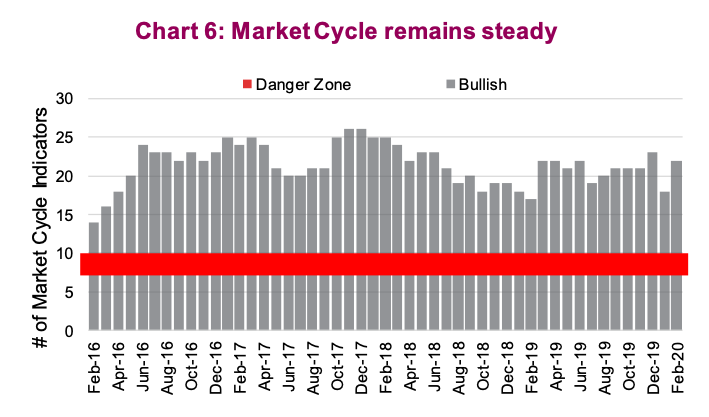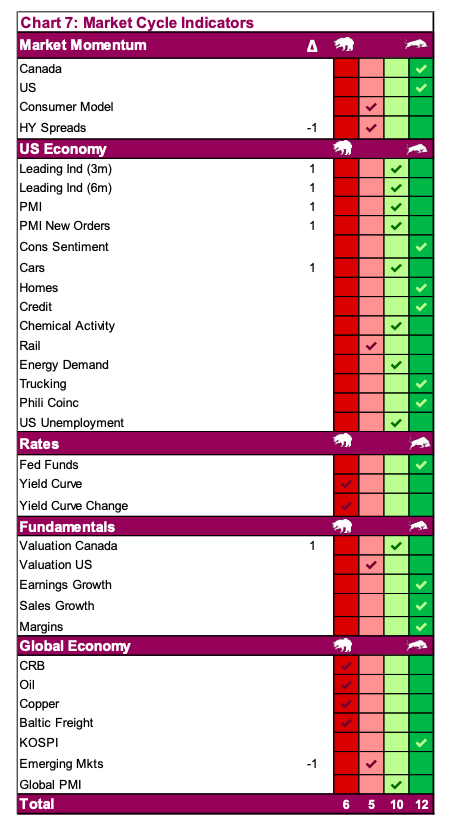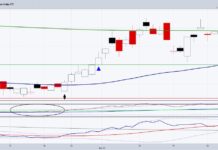
Market Cycle Composite Chart
While there certainly will be an economic impact from the coronavirus, investors can take some solace that the U.S. consumer remains very healthy, central banks are accomodative (and ready to act), and the global economy is slower but still on a reasonable footing.
Our Market Cycle indicators actually improved during February, rising from 18 to 22 (Chart 6).
In the table (Chart 7 below), we have included a number next to some indicators that denote if the signal moved from bearish to bullish or bullish to bearish.
The spike in high-yield spreads was a ‘-1’ as was the drop in emerging markets. However, Canadian valuations improved with the sell off and U.S. economic data firmed up across a number of metrics.

This is encouraging, but we should also add some caution. Of all the indicators, 18 of them are priced daily. In other words, this data is relatively live and the impact is more immediate.
There are 12 indicators that are based on economic or other data that is released monthly. The monthly data will certainly start showing some coronavirus-related weakness in the coming weeks so we would expect the bullish indicators to decline.
The Market Cycle indicators currently support the thesis that we are experiencing a correction and not the end of the cycle.
Even if a handful of indicators flip bearish in March, this would still support our current thesis as 22 is a fairly healthy starting point. This does embolden us more to view the market drop as an opportunity and we have started to do some tactical opportunistic buying.
In a previous Market Outlook report entitled ‘Challenging’ (January 6, 2020), we had the following to say about an upcoming market correction:
“As we have indicated, we believe there is a heightened risk of a period of market weakness that could come sooner rather than later. This could be triggered by a resumption of trade tensions, improved economic data calling into question the level of accommodation from central banks, rhetoric around the Democratic primary race and nomination process, or some unforeseen surprise. If this occurs while our Market Cycle signals remain encouraging, we would view it as an opportunity to increase equity exposure.”
The big question now is when?
Source: All charts are sourced to Bloomberg L.P. and Richardson GMP unless otherwise stated.
Twitter: @ConnectedWealth
Any opinions expressed herein are solely those of the authors, and do not in any way represent the views or opinions of any other person or entity.








